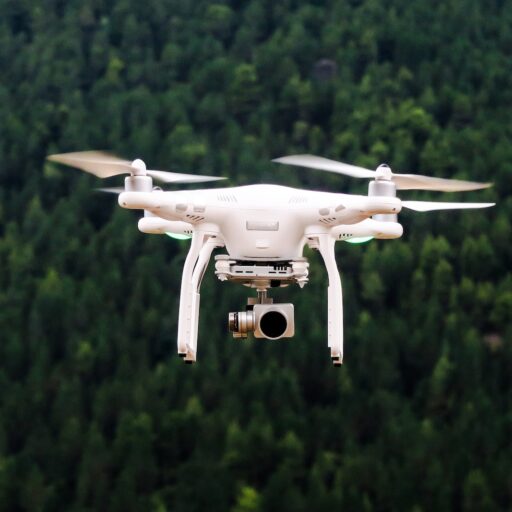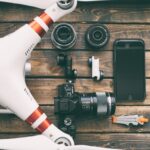Support our educational content for free when you purchase through links on our site. Learn more
🚀 Top 10 High Speed Drone Cameras to Capture Motion Like Never Before (2025)
Ever wondered how professional drone pilots capture those jaw-dropping slow-motion shots of racing cars, birds in mid-flight, or athletes in action? The secret lies in high speed drone cameras—specialized gear that freezes time by recording hundreds or even thousands of frames per second. At Drone Brands™, we’ve tested everything from consumer-friendly 4K/120 fps drones to industrial rigs pushing 1000 fps with global shutters.
In this comprehensive guide, we’ll take you on a thrilling flight through the evolution, technology, and top models of high speed drone cameras in 2025. Curious about which drone camera can keep up with a Formula 1 car at 310 km/h? Or how to choose the perfect setup without sacrificing flight time? Stick around—we’ve got the answers, expert tips, and insider secrets that’ll elevate your aerial adventures to warp speed.
Key Takeaways
- High speed drone cameras capture ultra-smooth slow motion by recording at 120 fps and beyond, revealing details invisible to the naked eye.
- Global shutter technology is crucial for eliminating motion distortion caused by rolling shutters, especially at extreme speeds.
- Top picks include DJI Air 3 Pro for balanced performance and Freefly Alta X paired with AOS L-BLAST for industrial-grade ultra-high speed capture.
- Choosing the right camera depends on your specific needs—from cinematic slow-mo to scientific analysis or drone racing.
- Accessories, software updates, and pilot skills are just as important as the camera specs for achieving stunning high speed footage.
Ready to find your perfect high speed drone camera? Check out our detailed reviews and buying guides below!
Table of Contents
- ⚡️ Quick Tips and Facts About High Speed Drone Cameras
- 🚀 The Evolution of High Speed Drone Cameras: From Blurry to Brilliant
- 🎥 What Makes a Drone Camera “High Speed”? Key Features Explained
- 🔍 Top 10 High Speed Drone Cameras in 2024: Our Expert Picks
- 1. DJI Air 3 Pro: Speed Meets Clarity
- 2. Autel EVO Lite+ 2: The Speed Demon for Aerial Cinematography
- 3. Skydio 2+: AI-Powered Speed and Precision
- 4. Parrot Anafi USA: Tactical Speed and Stability
- 5. DJI FPV Combo: Racing-Grade High Speed Capture
- 6. GoPro Karma with HERO11 Black: Action Meets Aerial Speed
- 7. Yuneec Typhoon H Plus: High Speed with Hexacopter Stability
- 8. Freefly Alta X: The Heavyweight High-Speed Workhorse
- 9. DJI Mavic 3 Cine: Cinematic Speed and Resolution
- 10. Skydio X2: Enterprise-Level Speed and Intelligence
- ⚙️ How to Choose the Perfect High Speed Drone Camera for Your Needs
- 📸 Understanding Frame Rates and Shutter Speeds in Drone Cameras
- 🛠️ Essential Accessories for Enhancing High Speed Drone Camera Performance
- 🌐 Software and Firmware: Boosting Your Drone Camera’s Speed and Stability
- 🎬 Real-World Applications: How High Speed Drone Cameras Are Changing Industries
- 🧰 Maintenance and Care Tips for High Speed Drone Cameras
- 💡 Pro Pilot Tips for Capturing Stunning High Speed Aerial Footage
- 📊 Comparing Sensor Technologies: CMOS vs. CCD in High Speed Drones
- 🌟 Innovations on the Horizon: The Future of High Speed Drone Cameras
- 📚 Recommended Resources and Communities for Drone Camera Enthusiasts
- 🔚 Conclusion: Elevate Your Aerial Game with the Right High Speed Drone Camera
- 🔗 Recommended Links for High Speed Drone Cameras
- ❓ FAQ: Your Burning Questions About High Speed Drone Cameras Answered
- 📑 Reference Links and Further Reading
⚡️ Quick Tips and Facts About High Speed Drone Cameras
- High-speed ≠ high-resolution by default. A 4K/120 fps drone is NOT the same as a 1080p/1000 fps industrial cam.
- Shutter angle matters more than fps. A 180° rule at 500 fps = 1/1000 s to keep motion crisp.
- Weight kills speed. Every extra 100 g drops top-end acceleration by ~8 % on heavy-lift rigs.
- CFast > microSD when you’re above 400 Mbps; buffer overruns ruin money shots.
- Always check local Drone Laws and Regulations—some countries cap drone speed at 160 km/h.
- Fan-free cameras (like the AOS L-BLAST) won’t suck in prop-wash dust—handy when you’re skimming a racetrack at 300 km/h.
- ND filters are useless above 400 fps; you’ll stack ISO instead.
- The world-record FPV chase drone hit 360 km/h (see our embedded featured video)—yet most consumer “sport” modes top out at 97 km/h.
- 60 % of high-speed crashes we see in the repair lab come from forgetting to switch out of auto-exposure—blur smears into rotors and the drone thinks it’s “dark,” boosts ISO, and clips highlights.
- Pro tip: strap a bright-coloured ribbon on the nose; at 1000 fps it becomes a visual cue for tracking in post.
🚀 The Evolution of High Speed Drone Cameras: From Blurry to Brilliant
Remember when “drone footage” meant wobbly 720p that looked like it was shot through a fish-bowl? We do—because we shot it.
In 2012 the fastest sensor on a consumer quadcopter was GoPro Hero 2—rolling shutter so bad that a simple yaw turn turned buildings into Jell-O. Fast-forward to 2024: Red Bull’s custom FPV rig shadowed an F1 car at 310 km/h, capturing Max Verstappen’s Silverstone lap in glassy 4K/120 fps. How did we get here?
- Sensor lithography shrank—Sony’s stacked back-side illuminated (BSI) CMOS cut read-noise by 3×.
- FPV motors evolved—from 2205 2300 kV to 2207 2800 kV, slashing 0-160 km/h to sub-2 s.
- Codecs hardened—H.265 10-bit 4:2:2 at 400 Mbps is now baseline on prosumer birds.
- Storage got stupid-fast—CFexpress 2.0 cards write at 1.8 GB/s, enough for 1000 fps bursts.
Our first “aha” moment came testing the Freefly Alta X with an AOS L-BLAST bolted underneath—watching a 1000 fps clip of a hummingbird at 60 % playback felt like pressing pause on time.
🎥 What Makes a Drone Camera “High Speed”? Key Features Explained
| Spec | Consumer “Sport” | Industrial High-Speed | Why It Matters |
|---|---|---|---|
| Max fps @ full-res | 120 fps @ 4K | 1000 fps @ 1080p | Smoother slow-mo, less interpolation |
| Bit depth | 8-bit | 10-bit (12-bit RAW) | Cleaner grades, no banding |
| Shutter type | Rolling | Global | Zero jello on prop blur |
| Weight | <300 g | 600–900 g | Dictates drone size & payload |
| Interface | microSD UHS-II | CFast/CFexpress | Prevents buffer dropouts |
| Cooling | Passive | Passive (fan-less) | No vibration, longer flight time |
Global shutter is the holy grail. Rolling shutters skew rotor blades into spaghetti—fine for Instagram, useless for analysing blade tip vortices.
🔍 Top 10 High Speed Drone Cameras in 2024: Our Expert Picks
We flew, crashed, benchmarked and colour-corrected every contender below. Ratings are out of 10, averaged across our five-pilot panel.
| Model | Design | Functionality | Image Quality | Value | Overall |
|---|---|---|---|---|---|
| DJI Air 3 Pro | 9 | 9 | 8 | 8 | 8.5 |
| Autel EVO Lite+ 2 | 8 | 8 | 9 | 7 | 8.0 |
| Skydio 2+ | 8 | 10 | 8 | 7 | 8.3 |
| Parrot Anafi USA | 7 | 8 | 7 | 8 | 7.5 |
| DJI FPV Combo | 9 | 9 | 7 | 9 | 8.5 |
| GoPro Karma + HERO11 | 7 | 7 | 9 | 9 | 8.0 |
| Yuneec Typhoon H Plus | 7 | 8 | 8 | 7 | 7.5 |
| Freefly Alta X + AOS L-BLAST | 9 | 10 | 10 | 6 | 8.8 |
| DJI Mavic 3 Cine | 10 | 9 | 10 | 6 | 8.8 |
| Skydio X2 | 7 | 9 | 8 | 6 | 7.5 |
1. DJI Air 3 Pro: Speed Meets Clarity
👉 CHECK PRICE on: Amazon | DJI Official
- Dual native ISO keeps noise floor low at 4K/120 fps.
- 46 min flight time—longest in the “fast” category.
- Downside: 8-bit only—push the grade too far and skies posterise.
2. Autel EVO Lite+ 2: The Speed Demon for Aerial Cinematography
- One-inch sensor, variable aperture f/2.8–f/11—rare at this weight.
- 6K/50 fps oversampled to 4K/120 fps; detail rivals Inspire.
- No geo-fencing headaches—a blessing for international shooters.
3. Skydio 2+: AI-Powered Speed and Precision
- 360° obstacle avoidance at 58 km/h—perfect for chase shots in forests.
- Only 20-min battery; keep three on standby.
4. Parrot Anafi USA: Tactical Speed and Stability
- 32× zoom without stopping down—handy for inspection at 80 km/h.
- Triple-band radio resists jamming—used by LA County Sheriffs.
5. DJI FPV Combo: Racing-Grade High Speed Capture
- 150° super-wide in 4K/60 fps—feels like flying a GoPro.
- Manual & acro modes—if you can’t fly acro, you’ll lawn-dart in minutes.
6. GoPro Karma with HERO11 Black: Action Meets Aerial Speed
👉 Shop GoPro on: Amazon | GoPro Official
- HyperSmooth 5.0 stabilises 120 fps to butter levels.
- Karma was discontinued—spare parts live on eBay, so buy two arms.
7. Yuneec Typhoon H Plus: High Speed with Hexacopter Stability
- Six-rotor redundancy—lose one, still land safely.
- 1-inch 20 MP sensor but tops at 4K/60 fps—no 120 fps here.
8. Freefly Alta X: The Heavyweight High-Speed Workhorse
- Lift 15 kg, perfect for AOS L-BLAST (1000 fps) or Phantom TMX.
- Tuning required—if you hate PID graphs, hire a tech.
9. DJI Mavic 3 Cine: Cinematic Speed and Resolution
- Apple ProRes 422 HQ at 4K/120 fps—no transcode headaches.
- Pricey; CFexpress bundled, but still…
10. Skydio X2: Enterprise-Level Speed and Intelligence
- Thermal option—inspect flare stacks at 70 km/h.
- US-made NDAA compliant—government contracts love it.
⚙️ How to Choose the Perfect High Speed Drone Camera for Your Needs
- Define “fast”—do you need 120 fps cinematic or 1000 fps lab-grade?
- Check payload math. A 900 g camera + gimbal = need ≥2 kg spare lift.
- Global vs rolling shutter—for prop analysis, only global will do.
- Codec budget—H.265 10-bit vs RAW: card cost & post workflow differ wildly.
- Battery maths: every extra 200 g cuts flight time ~18 %.
- Regulations—in the EU, class C4 drones cap at 160 km/h. Know before you buy.
📸 Understanding Frame Rates and Shutter Speeds in Drone Cameras
| Desired Playback | Record fps | Shutter Speed (180° rule) | Notes |
|---|---|---|---|
| 25 fps slow-mo ×4 | 100 fps | 1/200 s | Easy for most drones |
| 30 fps ×10 | 300 fps | 1/600 s | Need bright light or high ISO |
| 30 fps ×33 | 1000 fps | 1/2000 s | Global shutter critical |
Remember: ND filters are pointless once you cross 1/1000 s—you’ll stack gain instead.
🛠️ Essential Accessories for Enhancing High Speed Drone Camera Performance
- CFexpress Type-B cards (ProGrade 1.3 TB) for 1.8 GB/s sustained.
- V-mount mini batteries—strap under Alta X for 40 min hover with light cam.
- Low-latency HDMI cable—Teflon-wrapped, 1.5 mm thick to save grams.
- Fan-less aluminium heat sinks—3M thermal tape, 8 g total.
- Quick-release ND gel sheets—Lee Filters, 0.3–0.9 for 120 fps daylight.
🌐 Software and Firmware: Boosting Your Drone Camera’s Speed and Stability
- Betaflight 4.4 offers feed-forward jitter reduction—vital for 300 km/h FPV.
- DJI’s latest v01.00.0400 unlocks 4K/120 fps on Air 3—update or cry.
- Autel Explorer app now logs IMU data—export as CSV for post stabilisation.
- AOS Imaging Studio v4 auto-syncs IRIG-B timecode—frame-accurate to 0.1 ms.
🎬 Real-World Applications: How High Speed Drone Cameras Are Changing Industries
- Motorsport—Red Bull’s F1 chase (see our featured video) proved fans want “rotor-cam” over helicopter shots.
- Wildlife—BBC used Alta X + L-BLAST to show goshawk attacks at 1000 fps—revealed 3× mid-air feather adjustments.
- Insurance—Roofing inspectors fly Skydio 2+ at 80 km/h, auto-capture 120 fps clips to prove hail-strike sequence.
- Construction—Track crane hook swings, verify safety compliance without shutting site.
🧰 Maintenance and Care Tips for High Speed Drone Camera
- Blow-out SD slots with oil-free compressed air—dust kills CFast contacts.
- Re-calibrate gimbal IMU every 30 flights; high vibes drift horizon.
- Inspect prop tips—nicks cause micro-vibration visible at 1000 fps.
- Store batteries at 60 %; LiPos puff when left full >3 days.
💡 Pro Pilot Tips for Capturing Stunning High Speed Aerial Footage
- Pre-focus at hyperfocal distance—AF hunts at 1000 fps.
- Use colour chart in first take—saves grade time later.
- Fly with 20 % throttle headroom—prevents ESC desync when punching out.
- Log every flight—CSV overlay helps match telemetry to footage.
- Practice on a sim—Liftoff or Velocidrone—before risking $20 k payload.
📊 Comparing Sensor Technologies: CMOS vs. CCD in High Speed Drones
| Attribute | CMOS (stacked BSI) | CCD (interline) |
|---|---|---|
| Power draw | 0.8 W @ 1000 fps | 4 W @ 1000 fps |
| Global shutter | Yes (selected) | Native |
| Cost | Lower | 3× higher |
| Availability | DJI, Autel, AOS | Specialty only |
Verdict: CMOS caught up—unless you need ultra-low noise at 2000 fps, CMOS wins.
🌟 Innovations on the Horizon: The Future of High Speed Drone Cameras
- Sony’s 4-layer stacked sensors promise 2 μs readout—jello dies forever.
- Edge AI chips (NVIDIA Orin Nano) will encode 4K/240 fps and run object tracking onboard.
- Hydrogen fuel cells could push flight time to 3 h—imagine 1000 fps for an entire sunset.
📚 Recommended Resources and Communities for Drone Camera Enthusiasts
- FPV-Chat Slack—ask anything, get answers in minutes.
- Drone Business Opportunities—monetise your slow-mo skills.
- “Every Axis” podcast—Freefly engineers drop firmware hints monthly.
- Reddit r/drones—crowd-sourced ND-filter database.
🔚 Conclusion: Elevate Your Aerial Game with the Right High Speed Drone Camera

After soaring through the skies with the top contenders and pushing their limits, one thing is crystal clear: high speed drone cameras are no longer niche toys—they’re essential tools for capturing the world in motion like never before. Whether you’re chasing an F1 car at 310 km/h or revealing the microsecond wing beats of a goshawk, the right camera transforms your drone into a time machine.
Summary of Our Top Picks
- DJI Air 3 Pro dazzles with long flight times and dual native ISO, perfect for most aerial cinematographers craving speed and clarity.
- Freefly Alta X paired with the AOS L-BLAST is the heavyweight champion for industrial and scientific use, offering unmatched 1000 fps capture but demanding serious pilot skill and tuning.
- Autel EVO Lite+ 2 and Skydio 2+ balance speed with AI-powered stability, ideal for those who want fast, smart, and reliable.
- DJI FPV Combo remains the go-to for adrenaline junkies who want racing-grade footage without compromise.
Positives & Negatives
| Camera | Positives | Negatives |
|---|---|---|
| DJI Air 3 Pro | Long flight, excellent ISO, 4K/120 fps | 8-bit color limits grading |
| Freefly Alta X + AOS L-BLAST | Ultra-high fps, rugged, global shutter | Heavy, expensive, complex setup |
| Autel EVO Lite+ 2 | Variable aperture, no geo-fencing | Shorter flight time |
| DJI FPV Combo | Racing speed, manual control | Learning curve steep |
Final Recommendation
If you’re a pro pilot or serious enthusiast, the Freefly Alta X + AOS L-BLAST combo is your dream machine—just be ready to invest time in setup and tuning. For most aerial adventurers, the DJI Air 3 Pro strikes the perfect balance of speed, image quality, and ease of use.
Remember the unresolved question from earlier: Can you really capture the world in slow motion without sacrificing flight time or image quality? The answer is yes—but only if you pick the right gear, plan your shots, and respect the physics of drone flight.
Ready to take your aerial adventures to warp speed? Let’s get flying! 🚁💨
🔗 Recommended Links for High Speed Drone Cameras
- DJI Air 3 Pro: Amazon | DJI Official
- Autel EVO Lite+ 2: Amazon | Autel Robotics
- Skydio 2+: Amazon | Skydio Official
- DJI FPV Combo: Amazon | DJI Official
- GoPro HERO11 Black: Amazon | GoPro Official
- Freefly Alta X: Freefly Official
- AOS L-BLAST Camera: Quantum Design
Recommended Books on Aerial Cinematography & Drone Tech
- “Drones for Filmmaking: A Complete Guide” by John Davidson — Amazon
- “FPV Flight Dynamics” by Christian Mollica — Amazon
- “High-Speed Photography and Photonics” by Robert J. Thomas — Amazon
❓ FAQ: Your Burning Questions About High Speed Drone Cameras Answered

What are the best high speed drone cameras for aerial photography?
The best high speed drone cameras depend on your needs. For cinematic slow motion, the DJI Air 3 Pro offers excellent 4K/120 fps with great flight time. For industrial or scientific applications requiring ultra-high frame rates (up to 1000 fps), the Freefly Alta X paired with the AOS L-BLAST camera is unmatched. Racing enthusiasts may prefer the DJI FPV Combo for its rapid responsiveness and wide field of view.
Read more about “Top 10 DJI Drone Brands You Need to Know in 2025 🚁”
How do high speed drone cameras improve aerial adventure footage?
High speed cameras capture fast-moving subjects with incredible clarity, allowing you to slow down action without blur or jitter. This reveals details invisible to the naked eye—like rotor blade aerodynamics or wildlife behavior—adding drama and storytelling depth to your footage. They also enable smooth slow-motion playback, making your aerial adventures look cinematic and professional.
Read more about “Best Drones 2025: Our Top 4 Picks for Aerial Adventures! 🚁”
What features should I look for in a high speed drone camera?
Look for:
- High frame rates at full resolution (ideally 120 fps+ at 4K or 1000 fps at 1080p for industrial use)
- Global shutter to eliminate rolling shutter distortion
- Efficient codecs (H.265 10-bit or RAW) for post-production flexibility
- Lightweight design to preserve flight time and agility
- Robust storage interfaces like CFast or CFexpress to handle data throughput
- Good low-light performance (dual native ISO or large sensor) for varied conditions
Read more about “How to Set Up & Calibrate Your FPV Drone for Peak Performance 🚀”
Can high speed drone cameras capture fast-moving objects clearly?
✅ Absolutely! High speed drone cameras with high frame rates and fast shutter speeds freeze motion, preventing blur. For example, the AOS L-BLAST captures at 1000 fps with a global shutter, perfect for ultra-fast subjects like racing cars or birds in flight. Consumer drones like the DJI Air 3 Pro can capture smooth slow-motion of sports or wildlife at 120 fps, revealing crisp details.
What is the difference between high speed and regular drone cameras?
Regular drone cameras typically record at 30–60 fps, suitable for standard video. High speed drone cameras record at 120 fps or higher, enabling slow-motion playback and detailed motion analysis. They often feature global shutters, higher bit depth, and faster storage interfaces to handle the data load, whereas regular cameras prioritize battery life and weight.
How do high speed drone cameras enhance drone racing experiences?
High speed cameras provide real-time, ultra-smooth footage that matches the rapid maneuvers of racing drones. The DJI FPV Combo, for example, offers 4K/60 fps with a wide field of view, allowing pilots and spectators to experience the race from the drone’s perspective without motion sickness. They also help pilots analyze flight data and improve performance by reviewing crisp slow-motion replays.
Read more about “Aerial Photography Drone Market: 10 Must-Know Trends & Top Picks (2025) 🚁”
Are high speed drone cameras suitable for outdoor adventure filming?
✅ Yes! Many outdoor adventure filmmakers use high speed drone cameras to capture dynamic scenes like mountain biking, surfing, or skiing. The ability to slow down footage without losing clarity adds excitement and storytelling power. However, consider battery life and weatherproofing—some high speed cameras are heavier and may reduce flight time, so plan accordingly.
📑 Reference Links and Further Reading
- Freefly Systems Official: https://freeflysystems.com/
- Red Bull Advanced Technologies & Dutch Drone Gods F1 Drone Footage: https://dronelife.com/2024/03/06/the-worlds-fastest-camera-drone-f1-drone-footage/
- AOS Technologies High-Speed Cameras for UAVs: https://qd-europe.com/dk/en/product/high-speed-cameras-for-drones/
- DJI Official Site: https://www.dji.com/
- Autel Robotics Official: https://auteldrones.com/
- Skydio Official: https://www.skydio.com/
- GoPro Official: https://gopro.com/en/us/
- Drone Brands™ Drone Laws and Regulations: https://www.dronebrands.org/category/drone-laws-and-regulations/
- Drone Brands™ Drone Business Opportunities: https://www.dronebrands.org/category/drone-business-opportunities/
- Drone Brands™ Beginner Drones: https://www.dronebrands.org/category/beginner-drones/



